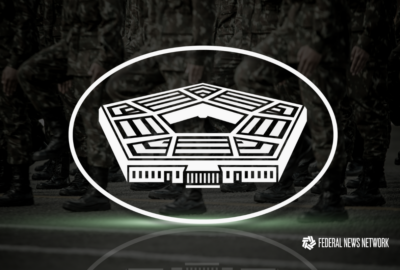## Gamification, Level Up! Army CIO Wants to Modernize EVERYTHING Forget respawning and loot drops, the Army’s got a serious upgrade in the works. Their Chief Information Officer (think the ultimate tech master) is going full “boss battle mode” and absorbing the entire business systems modernization office. That means everything from clunky spreadsheets to outdated training systems is getting a serious overhaul. We’re talking next-gen tech, streamlined processes, and potentially, a whole new way to play the game of war. Want to know what this means for the future of the battlefield? Read on, soldier!
Army CIO Absorbs Business Systems Modernization Office

The Army plans to introduce an improved cloud infrastructure in the coming weeks that will streamline how users are able to access secure cloud capabilities, according to the service’s chief information officer. The new version of the Army’s cloud services infrastructure — dubbed cArmy 2.0 — aims to build upon the foundations of recent cloud modernization efforts and make key improvements to them, Army CIO Leonel Garciga said Tuesday during a webinar broadcasted by Federal News Network.
A new landing zone for cArmy 2.0 will be available in April, he said. The move to the revamped environment comes after the Army took a “tactical pause” over the last couple of months to reevaluate its cloud delivery model, he noted.
“Like most traditional folks in enterprise’s big move to the cloud, we raced in some areas, we made some mistakes, we did some things that made sense at the time that don’t make as much sense now,” Garciga said. “And as new cloud services have become available in the regions across all of our [cybersecurity service providers], it’s really caused us to rethink some of the technical work that’s been done.”

Practical Implications of cArmy 2.0
According to Garciga, a key goal for cArmy 2.0 is to introduce automation and simplicity into the cloud architecture to improve overall delivery. “Those core services that tenants are receiving are going to be way easier to execute moving forward, as opposed to right now where it’s a little clunky,” he said.
The Army also wants to use automation to streamline onboarding services for new customers, as well as making sure to provide as much critical information to users as soon as possible, Garciga noted. “What does the environment look like? What do our images look like? What baseline managed services are we delivering as an Army to you, the tenant? Getting that out is hugely important,” Garciga said. “Our focus is going to be making sure that we make that available to all the folks that are coming into the environment.”

Platform-as-a-Service (PaaS) and Software-as-a-Service (SaaS) Cloud Deployments
cArmy 2.0 will focus on PaaS and SaaS cloud deployments — rather than infrastructure-as-a-service (IaaS). Doing so reduces the overall delivery timeframe, he said.
Army Contract Writing System Modernization
Current Challenges
According to Gino Magnifico, the Army Contracting Command’s chief information officer, the Army’s contract writing applications are supporting architectures that are 8-to-10 years old, which is a lifetime in the technology business.
“One of things that we are looking at as a structure, not just across the Army but all of DoD, is how do we upgrade our capabilities in contracting writing areas and get applications that are really more modernized, that reflect architectures, that work really well in these different environments, everything from sustainment to these thin solutions to these communication satellite requirements that we really try to leverage in this command,” Magnifico said.
Efforts to Improve Contract Writing Tools
Magnifico said the ACC is leading an effort to conduct an analysis of alternatives within the Army to figure out the requirements for the future contracting writing tools.
“We’ve been working that over the last six or eight months along with our deputy assistant secretary for procurement, their team and other commands across the Army to really look out not only within the Army and DoD, but across industry as well to see what applications exist, what capabilities exist and how best to leverage that in our acquisition planning processes,” he said.
Practical Applications
According to Magnifico, the ACC is developing customer dashboards to give them that insight, and makes the command more efficient. These tools and data are most important to the Army buyers in the fourth quarter when a majority of the money must be spent.
“Bringing everyone together, partnering on those processes and establishing those process teams allows us to become more efficient as a business enterprise and as a command in working with our partners on the logistical side and the financial side,” he said. “That’s one key tool we’ve used to really engage ourselves and work those day-to-day issues that fall out of the process. There isn’t a whole lot of time to absorb and engage those processes [in the fourth quarter].”
Conclusion
## A Unified Front: One Giant Leap or a Step into Uncharted Territory?
The Army’s decision to absorb its business systems modernization office into the CIO’s sphere signals a significant shift in its technology strategy. This move aims to streamline operations, eliminate redundancies, and ultimately accelerate modernization efforts. The article highlights the potential for increased collaboration and agility, with a centralized command structure overseeing both IT infrastructure and business processes. This shift could lead to more efficient resource allocation and a faster development cycle for crucial systems.
However, this consolidation also raises questions. Will the integration stifle innovation by creating bureaucratic hurdles? Will the diverse needs of various business units be adequately addressed under a single umbrella? Only time will tell if this move will prove to be a triumph of efficiency or a case of good intentions outpacing practical execution. One thing is certain: the Army’s digital transformation is accelerating, and this integration is a bold step in that direction.
The success of this strategy will hinge on the Army’s ability to navigate the complexities of merging distinct cultures and priorities. It’s a high-stakes gamble, with the potential to catapult the Army into a new era of digital dominance, or potentially create unforeseen challenges along the way. The next few years will be crucial in determining the true impact of this organizational reshuffle, and the gaming world will be watching closely as the Army’s next-generation technologies take shape.